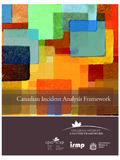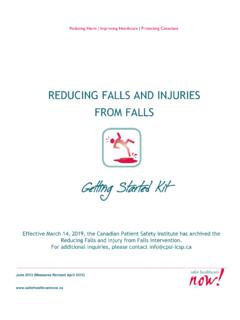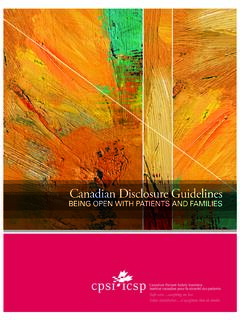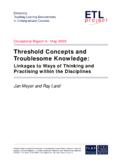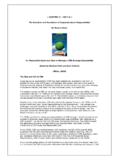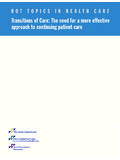Transcription of The Safety Competencies
1 The Safety CompetenciesFirst EditionThe Safety CompetenciesFirst EditionThe Safety CompetenciesEnhancing Patient Safety Across the Health ProfessionsRevised August 2009 ISBN 978-1-926541-15-0 The Canadian Patient Safety Institute would like to acknowledge funding and support from Health Canada. The views expressed here do not necessarily represent the views of Health project of The Canadian Patient Safety Institute in collaboration with The Royal College of Physicians and Surgeons of , Ontario, document est galement disponible en fran aisThe Safety CompetenciesEnhancing Patient Safety Across the Health ProfessionsFirst EditionSteering Committee Co-ChairsJason R. Frank, EditorThe Royal College of Physicians and Surgeons of CanadaSusan Brien, EditorThe Royal College of Physicians and Surgeons of CanadaDirector of Operations, Canadian Patient Safety Institute (200 5 - 2007)
2 Steering Committee MembersChantal Backman, Canadian Patient Safety InstituteDavid Gregory, University of LethbridgeJudy King, University of OttawaPierrette Leonard, Canadian Patient Safety InstituteDavid Rosenbloom, McMaster UniversitySamuel Shortt, Canadian Medical AssociationMarlene Smadu, University of SaskatchewanSue Tallett, Hospital for Sick ChildrenGord Wallace, Canadian Medical Protective AssociationProject SecretariatCanMEDS Team, The Royal College of Physicians and Surgeons of CanadaCynthia Abbott, Caroline Clouston, Jon Cormier, Tammy Hesson, Wendy Jemmett and Sarah TaberSpecial AdvisorsRobert Byrick, Sharon Caughey, Roxana Chow, Pat Croskerry, Mark Daly, Alan Forster, Kenneth A. Harris, Chris Hayes, Karen McEwen, Emily Lap Sum Musing, Kaveh G. Shojania, Sue Swiggum, Elaine Wongi( rev.)
3 August 2 0 0 9)For more information, please contact:Canadian Patient Safety 2008 by the Canadian Patient Safety rights reserved. Permission is hereby granted to redistribute this document, in whole or in part, for educational, non-commercial purposes providing that the content is not altered and that the Canadian Patient Safety Institute is appropriately credited for the work. Written permission from the Canadian Patient Safety Institute is required for all other uses, including commercial use of The Safety Competencies illustration or its in Ottawa, Ontario, CanadaHow to reference this document:Frank JR, Brien S, (Editors) on behalf of The Safety Competencies Steering Committee. The Safety Competencies : Enhancing Patient Safety Across the Health Professions.
4 Ottawa, ON: Canadian Patient Safety Institute; The Safety CompetenciesEnhancing Patient Safety Across the Health Professions Patient Safety is a critical aspect of high quality health Safety Competencies - produced in collaboration with The Royal College of Physicians and Surgeons of Canada - September 1 Contribute to a Culture of Patient SafetyDomain 2 Work in Teams for Patient SafetyDomain 3 Communicate Effectively for Patient SafetyDomain 4 Manage Safety RisksDomain 5 Optimize Human and Environmental FactorsDomain 6 Recognize, Respond to and Disclose Adverse Events The Safety CompetenciesEnhancing Patient Safety Across the Health Professions Patient Safety is a critical aspect of high quality health Safety Competencies - produced in collaboration with The Royal College of Physicians and Surgeons of Canada - September 1 Contribute to a Culture of Patient SafetyDomain 2 Work in Teams for Patient SafetyDomain 3 Communicate Effectively for Patient SafetyDomain 4 Manage Safety RisksDomain 5 Optimize Human and Environmental FactorsDomain 6 Recognize, Respond to and Disclose Adverse EventsForewordAn understanding of patient Safety concepts and how they are integrated into the daily work of health care is critical in providing safe patient care.
5 We know that health care workers are committed to their patients and are continually striving to improve their practice and provide high-quality care to all their patients. However, to support and maintain ongoing improvement, education and training activities in patient Safety need to be easily accessible for all health care Canadian Patient Safety Institute, in collaboration with The Royal College of Physicians and Surgeons of Canada and a broad cadre of content experts in education, have developed a framework titled The Safety Competencies : Enhancing Patient Safety Across the Health Professions to provide an interprofessional, practical and useful patient Safety framework that identifi es the knowledge, skills, and attitudes required by all health care professionals.
6 Given the complexity of the health system and the diversity of the health care workforce, The Safety Competencies framework was designed to be relevant to the many disciplines in health goal is to build a Canadian framework of Safety Competencies for any health care profession. It is a signifi cant accomplishment to have so many individuals, who are so very passionate about their perspective on patient Safety , to work on this exciting project in such dedicated fashion. We trust you agree that The Safety Competencies will raise the bar for health care education in Canada, and possibly around the world. I encourage everyone involved in the delivery of health care and training of health care professionals to review The Safety Competencies : Enhancing Patient Safety Across the Health Professions, and adopt the framework in education and continuing professional development activities.
7 The Safety Competencies is an exciting innovation. I believe it will signifi cantly help to promote a culture of patient Safety in the Canadian health care HassenChief Executive Offi cerCanadian Patient Safety Instituteiv 2008, the Canadian Patient Safety InstituteTHESAFETYCOMPETENCIES,1stEDITIO N( ) How to Reference This Document Safety Competencies Illustration Foreword Philip Hassen Table of Contents Introduction Susan Brien, Marlene Smadu, Chantal Backman, Jason R. Frank Methodology: Development of the Patient Safety Framework Cynthia Abbott, Jason R. Frank An Overview of the Safety Competencies Jason R. Frank Domain 1: Contribute to a Culture of Patient Safety David Musson, David Rosenbloom, co-chairs Domain 2: Work in Teams for Patient Safety Marlene Smadu, Susan Tallett, co-chairs Domain 3: Communicate Effectively for Patient Safety Judy King, Gord Wallace, co-chairs Domain 4: Manage Safety Risks Catherine Cronin, Diana Davidson-Dick, Rob Robson, Samuel Shortt, co-chairs Domain 5: Optimize Human and Environmental Factors Susan Brien, Pat Croskerry, co-chairs Domain 6: Recognize, Respond to and Disclose Adverse Events David Gregory, James Worthington, co-chairs Strategies for Implementing the Safety Competencies in the Health Professions Jason R.
8 Frank, David Gregory, Susan Brien, Marlene Smadu, David Rosenbloom, Sharon Caughey, Mark Daly Conclusions and Future Directions Laurel Taylor Appendix 1: Implementing The Safety Competencies : A Case Example Susan Brien, David Rosenbloom, Neil MacKinnon Appendix 2: List of Contributors Glossary References ii iii iv v 1 2 4 5 9 13 17 21 25 29 3435374145vTable of Contents 2008, the Canadian Patient Safety Institute1 2008, Canadian Patient Safety InstituteIntroductionOne of the key priorities of the Canadian Patient Safety Institute (CPSI) is to identify leading practices and eff ective interventions in health care education by collaborating with others to develop a Canadian interprofessional competency-based framework for patient Safety . To achieve this objective, the CPSI seeks to initiate change in the education of physicians, nurses, pharmacists and other health care professionals and to provide them with the tools and knowledge to build and maintain a safe health care development and integration of a framework of interprofessional patient Safety Competencies is a critical achievement that will accelerate the development of local patient Safety curricula.
9 The integration of Safety theories and the how-to s of system improvement at all levels of education and continuing professional development is needed across the spectrum of care. The objectives of The Safety Competencies project, and of this publication, are to: identify the key knowledge, skills and attitudes related to patient Safety Competencies for all health care workers develop a simple, fl exible framework that will act as a benchmark for training, educating and assessing health care professionals in patient Safety help make patient Safety Competencies easy for everyone to understand and apply in undergraduate, postgraduate and continuing professional development settingsA survey of the faculty deans of medicine, nursing, pharmacy, physiotherapy and occupational therapy was conducted to identify the concepts of patient Safety that were currently incorporated in the university undergraduate programs of all health professionals in Canada.
10 Respondents were asked to provide information regarding the current patient Safety content incorporated in their curriculum, as well as to rate their program in having incorporated these concepts to date. The survey results revealed little integration of patient Safety concepts within the Canadian curriculum of health professional schools and confusion over even the defi nition of patient Safety . This recognized need helped fuel this project both in Canada and s Education and Professional Development Advisory Committee reviewed a list of themes and Competencies from the survey and environmental scan and agreed on a methodology for the development of a Competencies framework. Using the internationally respected CanMEDS framework and the methodology utilized to create professional Competencies for physicians, the interprofessional Safety Competencies were developed.



